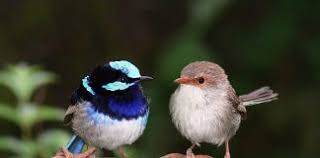Sexual dimorphism, A term applied in zoology and botany to the appearance Of an organism in 2 different forms. The dimorphic organisms are fundamentally identical in Structure and in origin. Thus, the bee is dimorphic in the female sex, the fertile queen and the barren worker presenting the two forms.
The two sexes present such widely different forms in some of the insects, crustaceans and fishes that they seem to belong to quite different genera—this is sexual Dimorphism. In the mineral kingdom a body is said to dimorphous when it is capable of crystallising according to two different systems geometrically incompatible, the chemical composition of the dimorphic bodies being identical. Carbon, sulphur, phosphorus, calcium carbonate and mercuric iodide are well-known examples.
Some Examples of Sexual Dimorphism In Animals:
1. Lion
It is one of the largest predators in Africa, which presents a very pronounced dimorphism. The mane in the males is the distinctive and unique feature among the felines. It helps him to appear larger than females when he has to protect the herd, or to prevent others from ‘stealing’ his food. This hair grows by the action of the male hormone, testosterone.
2. Peacock
This bird very admired for its beauty, and is known for the ‘fan’ of multicolored feathers that is present only in males . The male peacockspecimens are larger.
3. Tarantula
In this case, the sexual dimorphism is the reverse of the previous examples: the females are larger than the males . These in turn are more sedentary and need a larger body to be able to ‘store’ the eggs during their development.
Sometimes, the sexual dimorphism is so surprising that males and females of the same species were originally taken as members of totally different species, as is the case of the Eclectus Parrot, where the male is predominantly green, with an orange beak and the female is dark blue body, scarlet head and wings and black beak.
The dimorphism is not always evident, especially in species commonly used as companion animals, as is the case of canaries, finches and many older parrots. To correctly determine the sex of the latter, they have to do surgical sexing with an endoscope or through a DNA analysis.
It’s important to note that sexual dimorphism varies greatly among different species and can be influenced by ecological, evolutionary, and social factors. Additionally, not all species exhibit sexual dimorphism, and in some, the differences between males and females are quite subtle or nonexistent.
